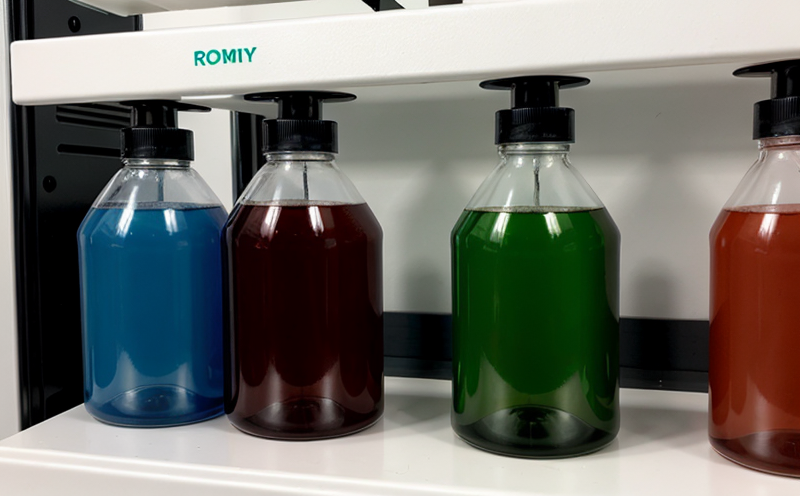ISO 75 Heat Deflection Temperature Reactivity Testing in Plastics
The ISO 75 standard, also known as Plastics—Determination of heat deflection temperature by flexural load method, is a widely recognized international specification used to measure the heat deflection temperature (HDT) of plastics under specified conditions. This test provides critical insights into the thermal stability and reactivity of polymers, which are essential for ensuring product quality in various sectors.
Heat deflection temperature testing measures how much a material deforms when subjected to an applied load at elevated temperatures. The ISO 75 method is particularly useful for identifying whether a polymer will retain its structural integrity under real-world operating conditions, especially in high-temperature environments. This test is crucial for industries such as automotive, aerospace, and electronics, where materials must withstand extreme temperature changes without deforming or losing strength.
The testing apparatus consists of a universal testing machine equipped with a flexure fixture that applies a specific load to the specimen while it is heated. The specimen is typically a flat, rectangular bar made from the material being tested. The test starts at room temperature and proceeds until the specimen deflects by a predetermined angle under the applied load.
The ISO 75 method specifies that the testing should be conducted according to the following parameters:
- A flexure fixture is used where the specimen is clamped at one end and subjected to a defined load.
- The temperature of the specimen is increased gradually, typically by 1.0°C/min until deflection occurs.
- Deflection is measured using a precise micrometer or similar instrument.
The test requires careful preparation of the specimens, including trimming and polishing to ensure uniformity. The specimens should be dried before testing to remove any residual moisture that could affect results. After the test, detailed reporting is provided, which includes the deflection temperature at a specified load and any other relevant data such as modulus of elasticity or thermal expansion.
The HDT value obtained from this test indicates how much stress a material can withstand while remaining structurally sound under high temperatures. This information is vital for selecting appropriate materials in applications where heat exposure is inevitable, ensuring that products do not degrade over time and maintain their performance throughout their lifecycle.
| Temperature Range | Load Application | Deflection Criteria |
|---|---|---|
| Room temperature to 150°C or higher, depending on the material | Specific load applied at each temperature increment | Deflection of 0.25 mm measured with a micrometer |
The results from this test are used by quality managers and compliance officers to ensure that materials meet regulatory standards and industry requirements. For R&D engineers, the data provides valuable insights into material behavior under various conditions, aiding in product development and optimization.
Compliance with ISO 75 is essential for many industries as it helps manufacturers demonstrate adherence to safety and quality standards. The test ensures that products are reliable and safe for use in high-temperature applications, reducing the risk of failure due to material degradation.
Benefits
The ISO 75 Heat Deflection Temperature Reactivity Testing offers numerous advantages across various industries:
- Enhanced Product Quality: Ensures that materials used in products meet stringent quality standards, enhancing customer satisfaction.
- Regulatory Compliance: Helps manufacturers comply with international and local regulations regarding material safety and performance.
- Risk Reduction: By identifying potential weaknesses in materials before product launch, risks associated with material failure are minimized.
- Informed Decision-Making: Provides R&D teams with valuable data to guide decisions on material selection and process optimization.
The test also supports procurement processes by ensuring that suppliers provide high-quality materials. This aligns with the broader goals of sustainability, reliability, and safety in product development.
Industry Applications
| Industry | Key Applications |
|---|---|
| Aerospace | Testing materials for engine components and structural integrity in high-temperature environments. |
| Automotive | Evaluating thermoplastics used in engine parts, brake systems, and other high-performance components. |
| Electronics | Assessing the durability of circuit boards and connectors exposed to heat during manufacturing or use. |
| Construction | Identifying suitable materials for structural elements that must withstand varying temperatures. |
The ISO 75 test is particularly important in these industries as it ensures that materials can perform reliably under the extreme conditions they encounter. The results of this testing are critical for ensuring product safety and longevity, thus reducing potential risks associated with material failure.
Competitive Advantage and Market Impact
- Innovation: By understanding the limitations of materials under heat stress, manufacturers can innovate new formulations that offer better performance.
- Customer Satisfaction: Providing products with enhanced durability contributes to higher customer satisfaction and loyalty.
- Market Leadership: Demonstrating compliance with international standards like ISO 75 can differentiate a company from competitors in the market, thereby enhancing its reputation and competitiveness.
The test also supports sustainable practices by ensuring that materials used are reliable and long-lasting. This not only reduces waste but also contributes to environmental conservation efforts.





